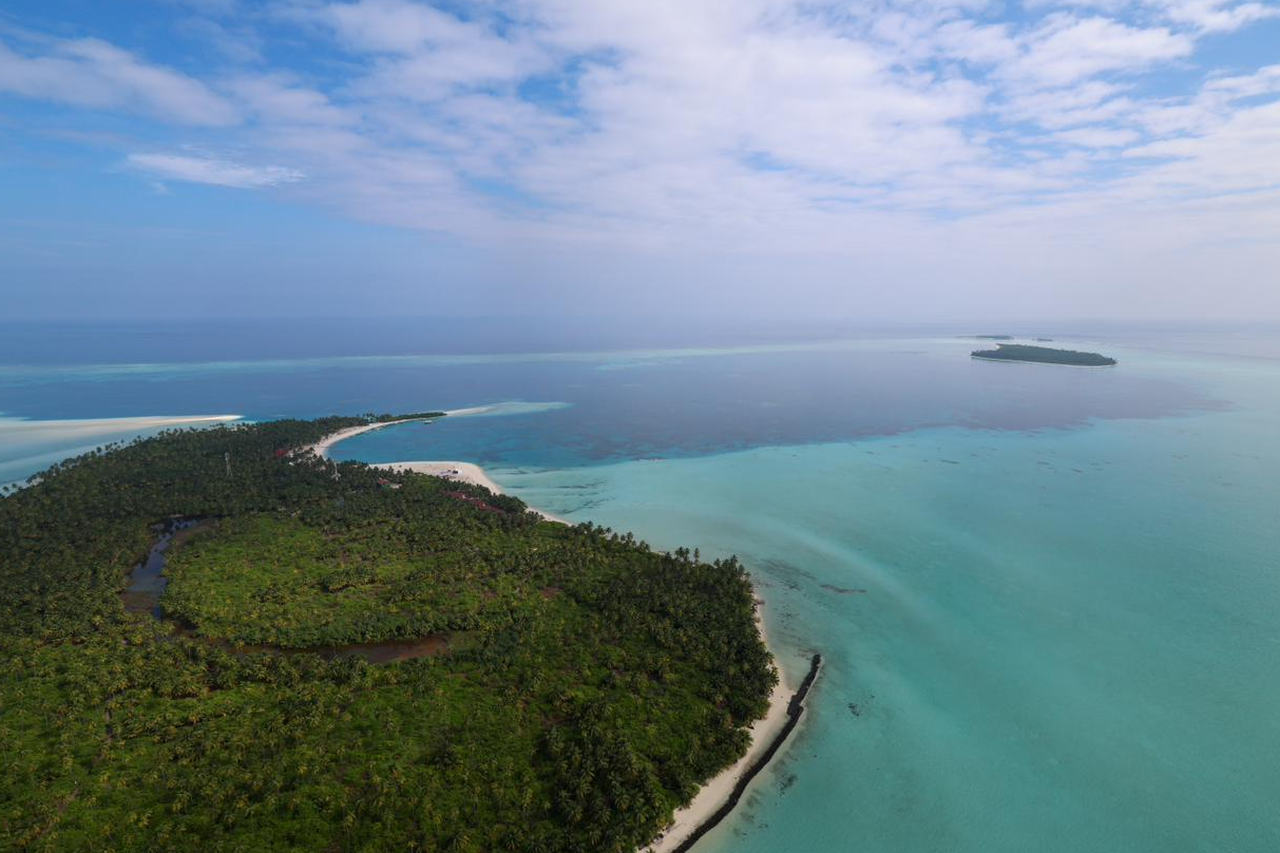- The Prime Minister’s recent visit to Lakshadweep has pushed the islands into the national spotlight.
About
| Details | |
| Location | In the Arabian Sea, off the southwestern coast of India. |
| Geographical Formation | Formed by coral activities and have a coral atoll structure. |
| Formation as UT | Formed as a Union Territory of India in 1956. |
| Total Islands | Comprises 36 islands, including atolls, coral reefs, and submerged banks. |
| Inhibition | 10 of the 36 islands are inhabited. |
| Capital | Kavaratti is the capital of the Union Territory. |
| Area | Total area of 32 sq km. |
Lakshadweep’s Cultural Uniqueness
- Diverse Influences: The islands exhibit a distinct blend of cultural influences from Malayalis, Arabs, Tamils, and Kannadigas.
- Islamic Practice: The form of Islam practiced here differs from that of the rest of India, reflecting the islands’ unique ethnic and linguistic heritage.
Historical Foundations: A Hindu Society Prior to Islam
- Early Settlers: According to scholar Andrew W Forbes, the initial settlers were most likely Malabari mariners, possibly castaways.
- Hindu Influence: Evidence suggests a pre-Islamic Hindu community, including buried idols and traditional melodies evoking old Hindu traditions.
Conversion to Islam: A Gradual Process
- Arab Invasion: Regular contact with Arab merchants and sailors resulted in the gradual conversion of islanders to Islam, which differed from Islamic practices on the Indian mainland.
- Islam Can Be Introduced Peacefully: According to historian Mahmood Kooria, the arrival of Islam in the region, including Lakshadweep, was marked by minimal political turmoil, mostly through trade relations.
Insulation from Mainland Influences on Cultural Development
- Control by the Arakkal Kingdom: The islands were ruled by the Arakkal kingdom of Kannur, Kerala’s only Muslim dynasty, in the 16th century.
- Interactions with European Powers: Despite confrontations with European powers, the islands retained a level of security and isolation.
- British rule further isolated Lakshadweep, allowing its culture to evolve independently of mainland India.
- Linguistic variety: The islands’ seclusion is mirrored in their linguistic variety, with the predominant languages being Malayalam, Jazari, and Mahl.
Matrilineal Society: A Distinctive Aspect of Islam in Lakshadweep
- Matriliny in Islamic Culture: The Islamic civilization of Lakshadweep is characterised by matriliny, or tracing descent and property through the mother’s line.
- Contrary to customary Islamic customs, anthropologist Leela Dube emphasises the compatibility of matriliny with Islam in Lakshadweep.
- Kerala’s Impact: Historian Manu Pillai connects the matrilineal legacy to Kerala’s cultural patterns, where matriliny was practiced by the Nairs and Namboodiris.
- Broader Indian Ocean Context: According to Kooria, matriliny is frequent among Muslims in the Indian Ocean region, implying a broader cultural context.
Religious and sociological perspectives
- Islanders say their matrilineal practice is compatible with Islam, citing Prophet Muhammad’s life with his first wife, Khadija.
- Sociological Point of View: Dr. N P Hafiz Mohamad emphasises that matriliny is an important part of the islanders’ Islamic practice.
Conclusion
- Preservation of Distinctive Traditions: Lakshadweep’s relative isolation has aided in the preservation of its distinct cultural and religious customs.
- The islands reflect a remarkable synthesis of numerous cultural and religious elements, producing a separate identity within the Indian subcontinent.
- Significance in Indian Ocean Culture: The cultural practices of Lakshadweep, notably its matrilineal society, illustrate the connectivity and diversity of cultures throughout the Indian Ocean region.
Source: https://indianexpress.com/article/explained/explained-culture/lakshadweep-cultural-landscape-islam-9100400/

